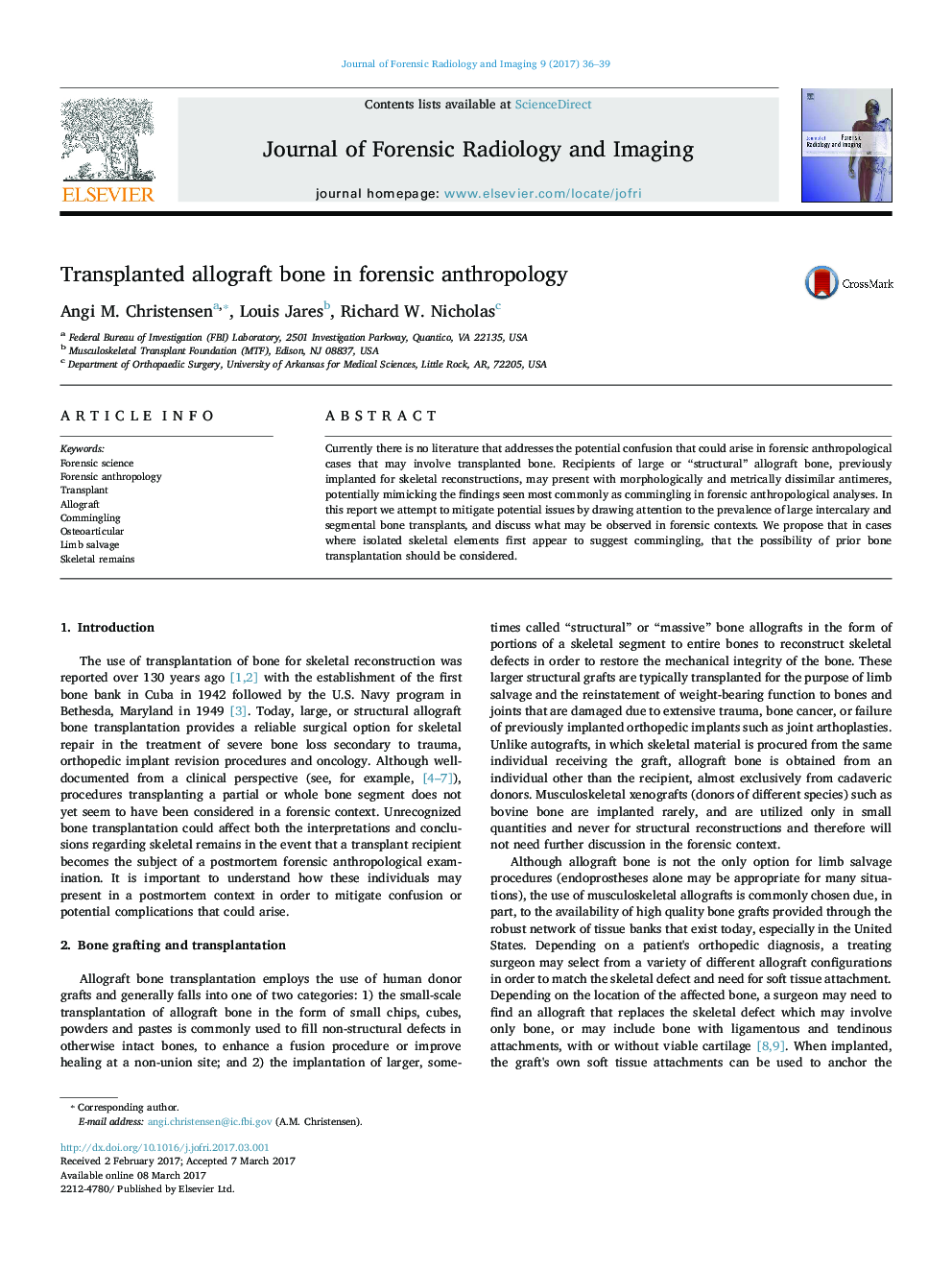| Article ID | Journal | Published Year | Pages | File Type |
|---|---|---|---|---|
| 6463079 | Journal of Forensic Radiology and Imaging | 2017 | 4 Pages |
â¢Allograft bone recipients could present with morphologically different antimeres.â¢Differing antimeres could potentially be confused for commingling.â¢Anthropologist should be aware of possible bone transplants in forensic cases.
Currently there is no literature that addresses the potential confusion that could arise in forensic anthropological cases that may involve transplanted bone. Recipients of large or “structural” allograft bone, previously implanted for skeletal reconstructions, may present with morphologically and metrically dissimilar antimeres, potentially mimicking the findings seen most commonly as commingling in forensic anthropological analyses. In this report we attempt to mitigate potential issues by drawing attention to the prevalence of large intercalary and segmental bone transplants, and discuss what may be observed in forensic contexts. We propose that in cases where isolated skeletal elements first appear to suggest commingling, that the possibility of prior bone transplantation should be considered.
